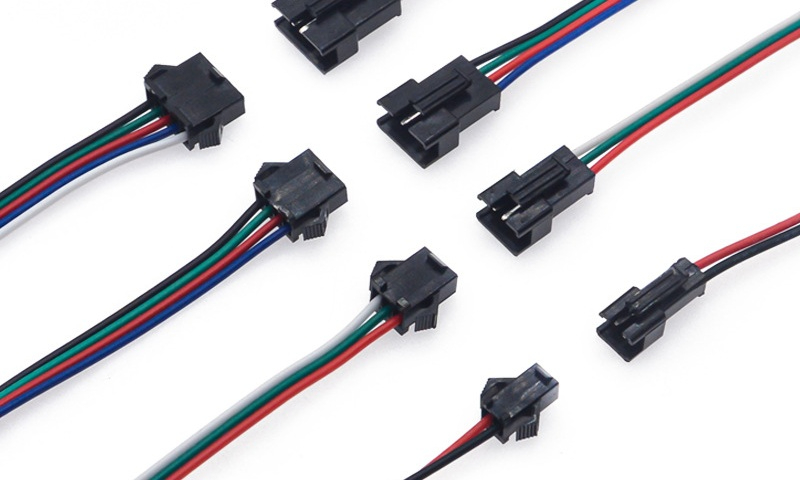High Quality OEM/ODM LED Strip Manufacturer
High Quality OEM/ODM LED Strip Manufacturer
July 16, 2024 503
LED strips are a popular choice for a variety of lighting applications due to their versatility, energy efficiency, and vibrant color options. Among the different types of LED strips, 4-pin and 5-pin configurations are commonly discussed. Understanding the differences between these two configurations is crucial for selecting the right type of LED strip for your project. This analysis will delve into the technical and practical distinctions between 4-pin and 5-pin LED strips.
4-pin LED strips are typically associated with RGB (Red, Green, Blue) LED technology. Here’s a breakdown of the pin configuration:
5-pin LED strips are often associated with RGBW (Red, Green, Blue, White) or RGBWW (Red, Green, Blue, Warm White) technology. The additional pin allows for the inclusion of a dedicated white LED channel. Here’s a breakdown of the pin configuration:

| Feature | 4-Pin LED Strips | 5-Pin LED Strips |
|---|---|---|
| Pin Configuration | +12V (or +24V), R (Red), G (Green), B (Blue) | +12V (or +24V), R (Red), G (Green), B (Blue), W (White) |
| Primary Technology | RGB (Red, Green, Blue) | RGBW (Red, Green, Blue, White) or RGBWW (Red, Green, Blue, Warm White) |
| Color Capability | Wide range of colors through RGB mixing | Full RGB spectrum plus high-quality white light |
| White Light Quality | Limited to RGB mixing, may not produce true white | Dedicated white channel for pure white light |
| Control Complexity | Simple control with basic RGB controllers | Requires advanced controllers to manage the additional white channel |
| Applications | Decorative lighting, accent lighting, simple lighting projects | Ambient lighting, task lighting, environments needing accurate color rendering |
| Color Rendering | Lower CRI, limited color accuracy | Higher CRI, improved color accuracy |
| Cost | Generally less expensive | Slightly more expensive due to additional components |
| Flexibility | Adequate for basic color effects | Enhanced flexibility with the ability to adjust color temperature |
Color Range and Quality:
Complexity and Control:
Cost:
The choice between 4-pin and 5-pin LED strips hinges on the specific requirements of your lighting project. If you need basic RGB color mixing and simplicity, 4-pin LED strips are an excellent choice. However, if your project demands high-quality white light in addition to RGB colors, 5-pin LED strips offer enhanced flexibility and improved color rendering. Understanding these differences will ensure that you select the most suitable LED strip for your needs, achieving the desired lighting effects efficiently and effectively.
If you need assistance from professionals, feel free to contact us. We are here to provide you with expert help and support for all your needs. Don't hesitate to reach out to our team for personalized assistance and solutions. We look forward to serving you.
Our sales will reply to you within 2 hours.
